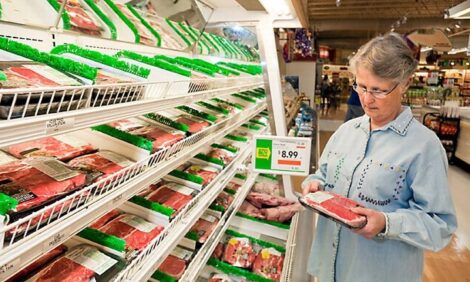USDA's final monthly report contained no surprises
US Swine Economics Report - 2nd September 2003. - Regular report by Ron Plain on the US Swine industry, this week looking at the USDA's final monthly hogs and pigs report.
|
Need a Product or service?
|
|

Ron Plain |
Last Friday, USDA issued their final monthly hogs and pigs report. The first monthly report came out in January of 2001 in response to legislation passed in 1999. The monthly reports are being discontinued because USDA found that many hog producers don't like filling-out inventory surveys every month. Consequently, the response rate for the monthly reports has been lower than for the quarterly surveys. A lower response rate means the monthly numbers are not as accurate as the quarterly numbers. Since December 2000, the average revision in the size of the previous month's pig crop, as first reported in a monthly report, has been 50% greater than the average revision of the previous month's pig crop first reported in a quarterly report.
USDA will continue to conduct and report the traditional quarterly surveys n March, June, September and December. They will release their September quarterly survey on Friday September 26.
Given that the monthly reports have been widely ignored by the industry, it is fitting that USDA's final monthly report contained no surprises. The August hogs and pigs report was right in line with trade expectations. The number of sows farrowed during July was 2.6% smaller than in July of 2002. This is slightly fewer than implied by the summer farrrowing intentions in the June quarterly report (down 2.1%). Pigs per litter in July (8.9) were up 0.1% from a year ago, which is a smaller increase than the average for the previous six months (up 0.6%). USDA estimated the July 2003 pig crop to be 2.5% smaller than July 2002. That's a significant drop, but it's the smallest decline since January.
USDA said the inventory of sows and gilts held for breeding was 3.2% smaller than August 1, 2002 and that producers bred 2.2% fewer sows and gilts during July 2003 than a year ago. Both numbers are down more than one might expect given that the June quarterly report predicted fall farrowings would be down only 0.8%.
The March and April pig crops (96.4% and 96.1% of a year ago, respectively) imply that September and October hog slaughter will be 2% or so below that of 12 months earlier, assuming continuing increases in imports of hogs and pigs from Canada. Terminal market barrows and gilts averaged $26.28/cwt last September and $28.87/cwt in October 2002. We are expecting September-October 2003 hog slaughter to be down 1-2% and live hog prices to average in the low to mid $30s this year.
The May-June pig crop (96.8%) suggests November-December hog slaughter will be down slightly compared to a year ago. Prices averaged only $28.35/cwt for terminal market barrows and gilts in November-December 2002. Look for live hog prices in the final two months of 2003 will average in the low $30/cwt at the terminal markets.


















